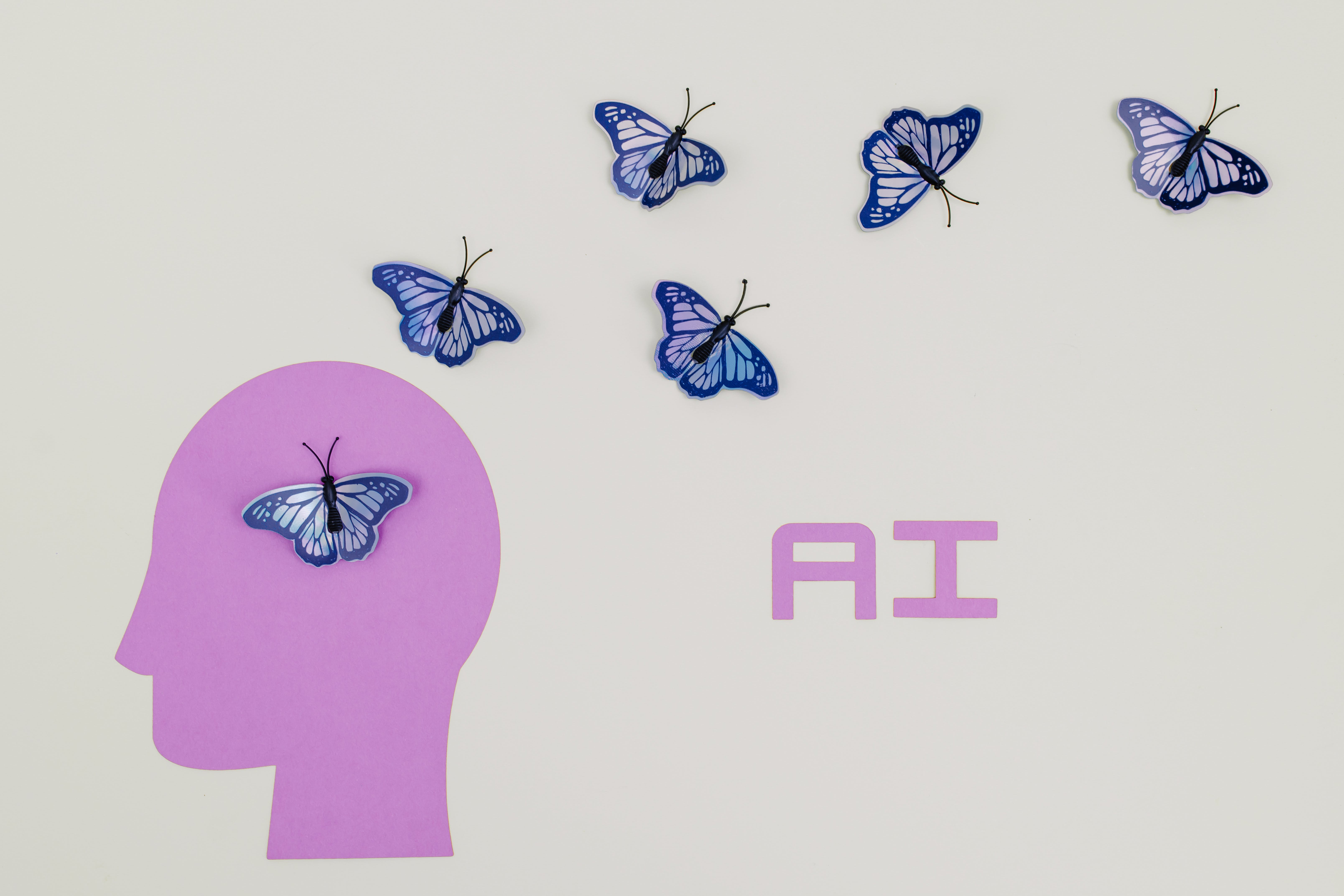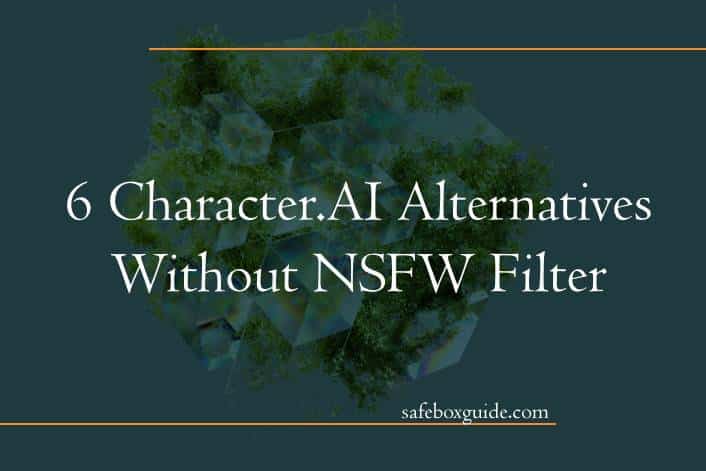As technology continues to advance, the demand for AI-generated characters has skyrocketed. However, many existing platforms come with restrictive NSFW filters that limit artistic freedom and expression. This leaves creators seeking alternative solutions that provide flexibility and control over their character designs without compromising on quality or safety. If you’re ready to explore revolutionary AI tools that cater to diverse creative needs without imposing unnecessary restrictions, then buckle up as we take you on a journey through 6 game-changing Character.AI alternatives that will elevate your digital character creation experience.
Contents
Overview of Character.AI and NSFW filter
Character.AI is a cutting-edge platform that uses advanced artificial intelligence algorithms to create realistic and personalized characters for various applications. With its powerful NSFW filter, Character.AI ensures that the generated characters are safe for all audiences by automatically filtering out inappropriate or explicit content. This feature makes it an ideal choice for developers, game designers, and digital artists who need to maintain a family-friendly environment while working on character design. By leveraging the NSFW filter, users can focus on creativity without worrying about inadvertently generating offensive or unsuitable content.
The NSFW filter in Character.AI provides an added layer of protection for both creators and end-users, ensuring that only suitable and safe character designs are produced. This not only saves time and effort but also prevents any potential legal or ethical issues related to incorporating inappropriate content in projects. Whether creating characters for games, animations, or virtual reality environments, the NSFW filter enhances the user experience and promotes a positive engagement with the created characters among diverse audiences.

1. OpenAI’s GPT-3
OpenAI’s GPT-3 has been making waves in the world of artificial intelligence with its remarkable language generation capabilities. With 175 billion parameters, it can generate human-like text and assist in a wide range of tasks such as content creation, translation, and more. Its ability to understand and respond to complex prompts has opened up new possibilities for AI applications across various industries.
What sets GPT-3 apart is its unprecedented scale, which enables it to produce high-quality output that rivals human-generated content. However, some have raised concerns about the potential ethical implications of using such a powerful tool, particularly in terms of misinformation and bias. While GPT-3 offers immense potential for innovation and efficiency, it also brings with it the responsibility to use it wisely and with careful consideration of its impact on society. As businesses seek alternatives that align with their values and objectives, understanding the capabilities and risks associated with GPT-3 is crucial for informed decision-making.
2. IBM Watson
IBM Watson is a formidable contender in the AI landscape, offering a wide range of cognitive computing solutions that extend beyond just NSFW filtering. One of its key strengths lies in its natural language processing capabilities, enabling it to understand and process human language in a way that few other platforms can match. Its ability to analyze unstructured data from various sources gives it an edge in uncovering insights and patterns that might elude other AI systems.
Moreover, IBM Watson’s robust machine learning algorithms empower it to continuously learn and adapt, making it a versatile tool for a variety of industries beyond just content moderation. Its integration with existing business systems also makes it easier for organizations to harness the power of AI without overhauling their entire infrastructure. With its advanced capabilities and industry-specific applications, IBM Watson presents itself as more than just an alternative to Character.AI; rather, it stands as a powerful ally for businesses seeking cutting-edge AI solutions.
3. Microsoft Azure Cognitive Services
Microsoft Azure Cognitive Services represents a groundbreaking leap in the field of artificial intelligence. One of its most intriguing features is its ability to analyze and process natural language, enabling developers to effortlessly integrate advanced language comprehension into their applications. This empowers businesses to deliver more personalized experiences, enhance customer service, and gain deeper insights from unstructured data. Furthermore, its facial recognition technology opens up new frontiers for secure authentication and immersive user experiences.
Another remarkable aspect of Microsoft Azure Cognitive Services is its widespread applicability across diverse industries. From healthcare to finance, public safety to retail, the platform offers a versatile array of tools that can be tailored to specific business needs. For example, medical professionals can leverage its powerful machine learning algorithms for image recognition in radiology or pathology diagnostics. Meanwhile, retailers can utilize sentiment analysis and recommendation engines to drive customer engagement and boost sales.
Moreover, what sets Microsoft Azure Cognitive Services apart are its robust security measures and compliance standards. Through a combination of encryption protocols, access controls, and regulatory certifications such as HIPAA and GDPR compliance, businesses can confidently harness the capabilities of cognitive services while safeguarding sensitive data. This focus on security not only meets industry requirements but also provides peace of mind for organizations navigating the complexities of data privacy laws.

4. Wit.ai by Facebook
Wit.ai by Facebook is an exciting alternative to Character.AI, offering advanced natural language processing capabilities. With its easy-to-use interface and powerful machine learning algorithms, Wit.ai empowers developers to build intelligent chatbots and voice interfaces with relative ease. One standout feature of Wit.ai is its ability to understand context and identify entities within user input, enabling more sophisticated interactions with users.
Furthermore, Wit.ai provides extensive language support and continuous learning abilities, allowing chatbots to adapt and improve over time. This gives developers the flexibility to create diverse applications across various industries while leveraging the vast resources of Facebook’s technology ecosystem. Overall, Wit.ai’s robust features and integration options make it a compelling choice for those seeking a reliable alternative to Character.AI without the need for NSFW filtering.
5. Dialogflow by Google
Dialogflow by Google is a leading conversational AI platform that offers powerful natural language processing capabilities. Its ability to understand and process complex user queries in various languages sets it apart from competitors. With its rich set of pre-built agents and easy integration with various messaging platforms, Dialogflow simplifies the development of chatbots and virtual assistants.
What makes Dialogflow unique is its robust machine learning algorithms that constantly improve conversation handling over time. This allows for more accurate and contextually relevant responses, enhancing overall user experience. Moreover, its seamless integration with other Google Cloud services further enhances its capabilities, making it a top choice for businesses looking to implement sophisticated conversational interfaces. Overall, Dialogflow empowers developers to create engaging and intelligent conversational experiences that can truly revolutionize customer interactions.

6. Rasa Open Source
Rasa Open Source stands out as a formidable alternative to Character.AI, especially for those seeking more customization and control. With its open-source nature, Rasa empowers developers to craft highly personalized conversational AI experiences without the limitations of pre-built models. This allows for flexibility in handling sensitive topics or industry-specific jargon that off-the-shelf solutions may struggle with. Furthermore, Rasa’s active community and rich documentation provide a wealth of resources for building sophisticated chatbots and virtual assistants tailored to diverse needs.
One distinguishing feature of Rasa is its focus on empowering businesses to directly manage their AI projects rather than relying heavily on third-party platforms, marking it as an attractive choice for organizations looking to maintain ownership and fine-tune the nuances of their conversational agents. Additionally, Rasa’s deep integration capabilities with various platforms and languages offer an advantage in creating seamless omnichannel experiences while prioritizing data privacy compliance—an essential factor for companies operating within strict regulatory environments.
Conclusion: Exploring non-NSFW AI alternatives for character generation
In conclusion, exploring non-NSFW AI alternatives for character generation opens up a world of possibilities for content creators and developers. By utilizing algorithms that prioritize creativity and inclusivity, these alternatives can generate diverse characters without the potential risks associated with using NSFW filters. This approach not only promotes responsible content creation but also ensures that characters reflect a broader range of identities and experiences.
Furthermore, embracing non-NSFW AI alternatives encourages innovation in the field of character generation. Developers can focus on refining the capabilities of these platforms to produce high-quality, realistic characters while respecting ethical considerations. By investing in these alternatives, creators can push the boundaries of AI-generated content in a way that is both safe and progressive – ultimately shaping a more inclusive future for virtual character design.

